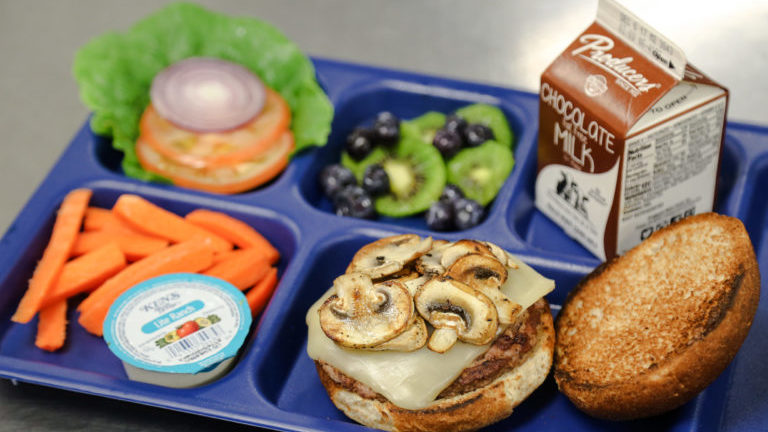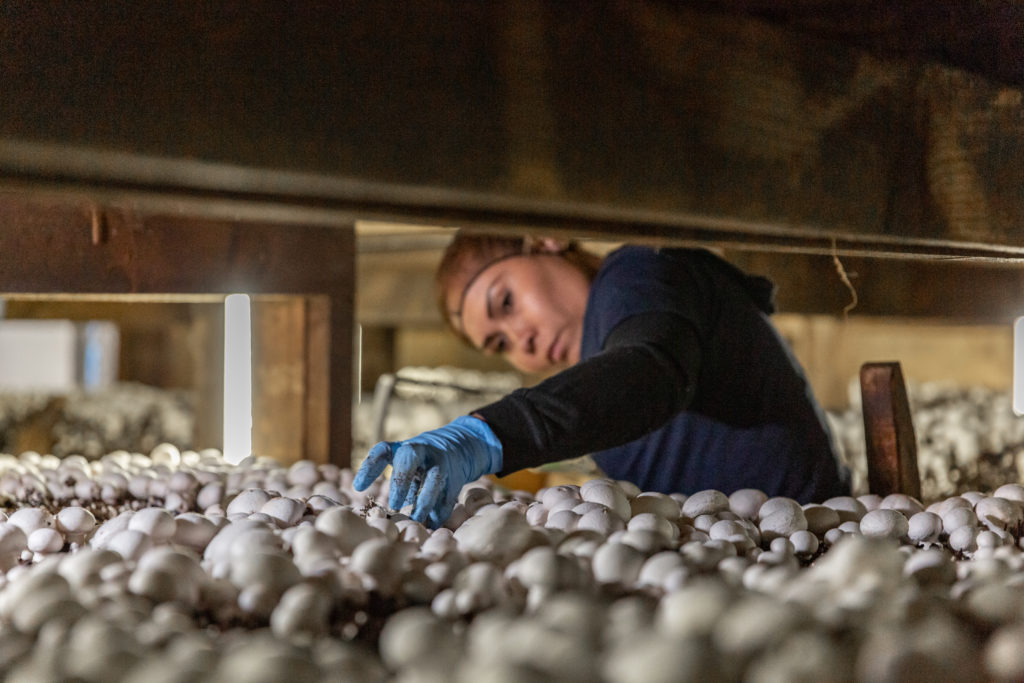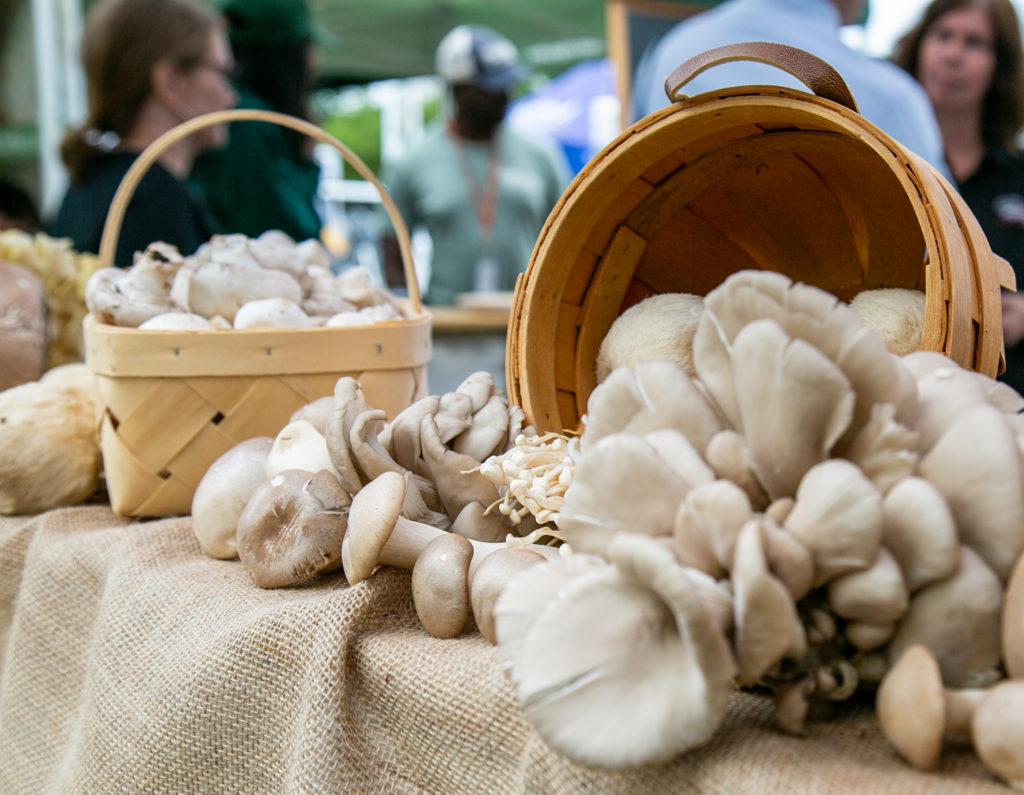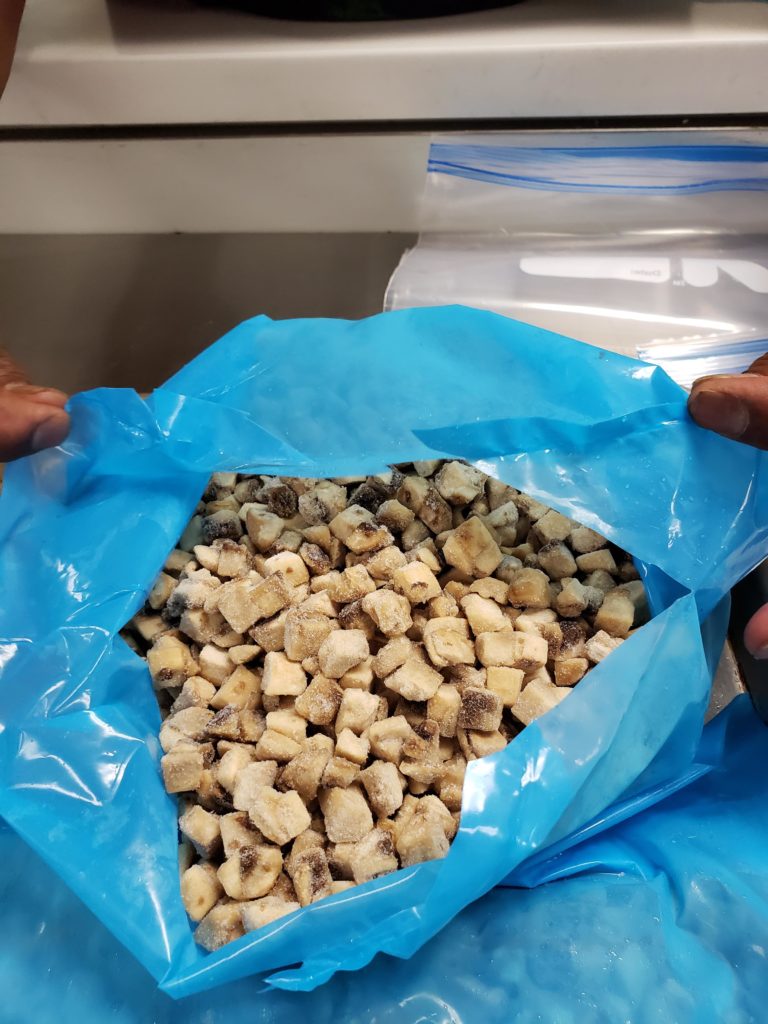 Schools
Schools
Sourcing, Selecting, Cleaning, and Storing Mushrooms for School Meals
We all know how important it is to have a reliable source for the food we put on our menu – no one likes a menu change, and the safety and quality of our food is of the utmost importance. We also need foods that are easy to store and keep fresh until we’re ready to serve them.
Mushrooms are a great option for school meals due to their flavor, versatility, nutritional and environmental benefits. They can also be easy to source and store! As with any food we bring into our kitchens, proper handling can be the difference between a high quality product, and one that might end up in the trash. With tight budgets, hungry kids, and regulations to follow – there’s no time for that! So let’s dive into how you can make the most of mushrooms on your menus.
Sourcing Fresh Mushrooms
Consider Your Vendor & Go Local When Possible
When it comes to sourcing fresh mushrooms, first consider your vendor. Talk to your current produce vendor and find out which mushrooms are readily available for delivery. As with all fresh produce, the more frequently you can receive deliveries the better, resulting in fresher product. The most typical mushroom varieties you’ll use in your menus include white, which are great for fresh applications like salad bars and marinated salads and can also be cooked, and brown mushrooms, which are perfect for cooked dishes. Portobello with its deep, meat-like texture is great for grilled and roasted dishes, and shiitake mushrooms are perfect for stir-fries, pastas, soups, entrees and sides.
Also check to see if your distributor has locally-grown varieties available. Mushrooms are grown in nearly every state and are often local to school districts, so they’re an excellent option for your Farm to School program. Since they’re grown indoors, they’re available year-round, which is another plus for consistent menu planning.

If you are participating in the Department of Defense Fresh Fruit and Vegetable Program, or DoD for short, you may also find your suppliers are a source for fresh mushrooms.
Mushrooms can also be sourced through your broadline distributor if you rely on them for your fresh produce deliveries.
Forecast Supply Needs
Some vendors may ask you to forecast how much you’ll need from week to week, so how can you do that? When trying to determine what amount to order, use the USDA Food Buying Guide to get a rough estimate. Search for mushrooms and use the information to calculate the purchase units needed.
USDA Food Buying Calculator
The Food Buying Calculator is also a useful tool that allows you to enter in how many servings you need and the serving size, and it will help calculate how many mushrooms to purchase. When you look at the FBG you will see yields for fresh mushrooms in a variety of forms, cooked or raw. Brown or white mushrooms all credit the same in our programs. You will see the yields are very good, making mushrooms an economical addition to your pantry and a value added item that increases your students’ perception of that dish. You will yield 18.5 ¼ cup servings per pound of fresh RTU sliced mushrooms, and when cooked that yield is 8.3 ¼ cups per pound. We often see mushrooms served as part of a mixed vegetable blend, so an ⅛ cup serving added to your vegetable blend costs a little and adds a lot.
Use Your Recipes as Resources
Your recipes will also help with determining how much to order. How many recipes require the use of mushrooms? If you are putting them out everyday for your fresh produce bar, you will want to refer to your production records. Factor in how many times you will be serving it on your menu versus how frequently you can get a delivery. Keep in mind when you first do this, you may over order, but that’s OK! If you find yourself not needing as much and not using them as fast as anticipated, look at where else you can add mushrooms to an existing option. If necessary, freeze the mushrooms before they decrease in quality but as always, we try and order what we need and use what we order. Your vendor may offer a variety of mushroom sizes and packs too, so if you’re finding yourself with too little or too much, talk to your vendor about different pack size options.
Be sure to check out the many recipes Mushrooms in Schools has available for featuring mushrooms on your menus too!
Selecting Fresh Mushrooms

Evaluating Product Quality on Delivery
How can you evaluate the quality and freshness of the mushrooms you receive, to ensure they’ll yield a high quality recipe? Make sure the mushrooms you receive have a nice smooth dry feel; they should not be slimy but also should not feel dried out or have shriveled up tough skin. They should be firm and appear plump. Make sure the color is good, not dark or shiny.
Extend the Shelf-Life of Fresh Mushrooms with Proper Storage
When it comes to storing mushrooms, if done properly they can be stored for up to a week. Refrigerate your mushrooms as soon as you receive them, between 34 to 38 degrees Fahrenheit. The size of your operation will also dictate how you store them. Mushrooms on the commercial level normally come in a box that has air vents in it, which is what they should be stored in, if possible. If you get down to a certain point where you do not need that large container, you can place them in a brown paper bag, folding the top of the bag over.
Do not store mushrooms in a crisper because of the high moisture level. Place your mushrooms in the area where they won’t get squished or bruised, which causes you to lose shelf life. Do not store them around food with a strong odor such as garlic and onions, since mushrooms are very porous and will pick up other flavors. Some mushrooms hold up better than others depending on the variety you are working with, too.
For more tips on proper storage and handling of mushrooms, visit our Storage and Handling page.
Cleaning Mushrooms
When it’s time to prepare mushrooms, proper cleaning is key. Mushrooms should be rinsed quickly in cool water, but never soaked – soaking will cause the mushrooms to get soggy and produce a poor quality product. Here’s a tip: Use the sprayer head at your produce station and lightly rinse the mushrooms, shake off excess moisture and air dry before processing. Timing is also important – don’t wash mushrooms until they’re ready to use, because again they will absorb water and the longer they sit after rinsing, the quicker they’ll deteriorate. If buying further processed mushrooms, you may not need to wash them at all.
Make sure your foodservice teams are familiar with these rules of thumb so they can ensure your mushrooms are the stars of the show when meal service begins. And if you would like a visual reminder, print out a copy of our Fresh Mushrooms Handling poster and display it in your kitchens.
Introducing IQF Mushrooms

IQF or “individually quick frozen” mushrooms are available commercially. These mushrooms are diced or sliced and individually quick frozen, meaning the mushroom pieces will be separated and not stuck together when you remove them from the freezer for use.
How can you work with IQF mushrooms?
These mushrooms are great for cooking and adding to a variety of entrees and sides, as well as blending with meat. In most cases, you can grab them straight from the freezer and add them right to the pan, no thawing needed.
As you can see, sourcing and handling mushrooms can be easy and economical when you follow some simple guidelines. For more tips and resources for ensuring the proper handling of mushrooms in your operation, be sure to explore our website!


We collect, use and process your data according to our Privacy Policy.